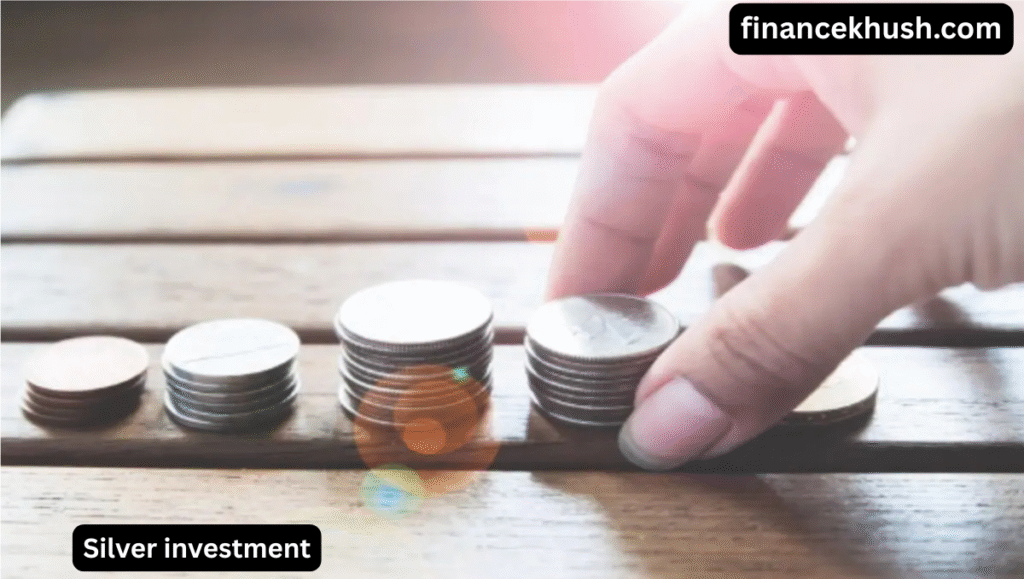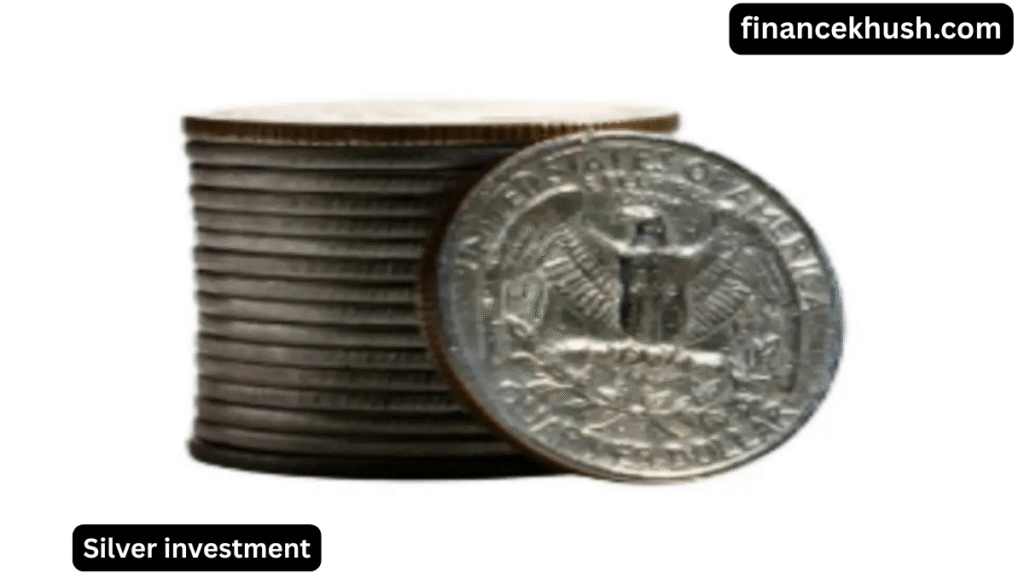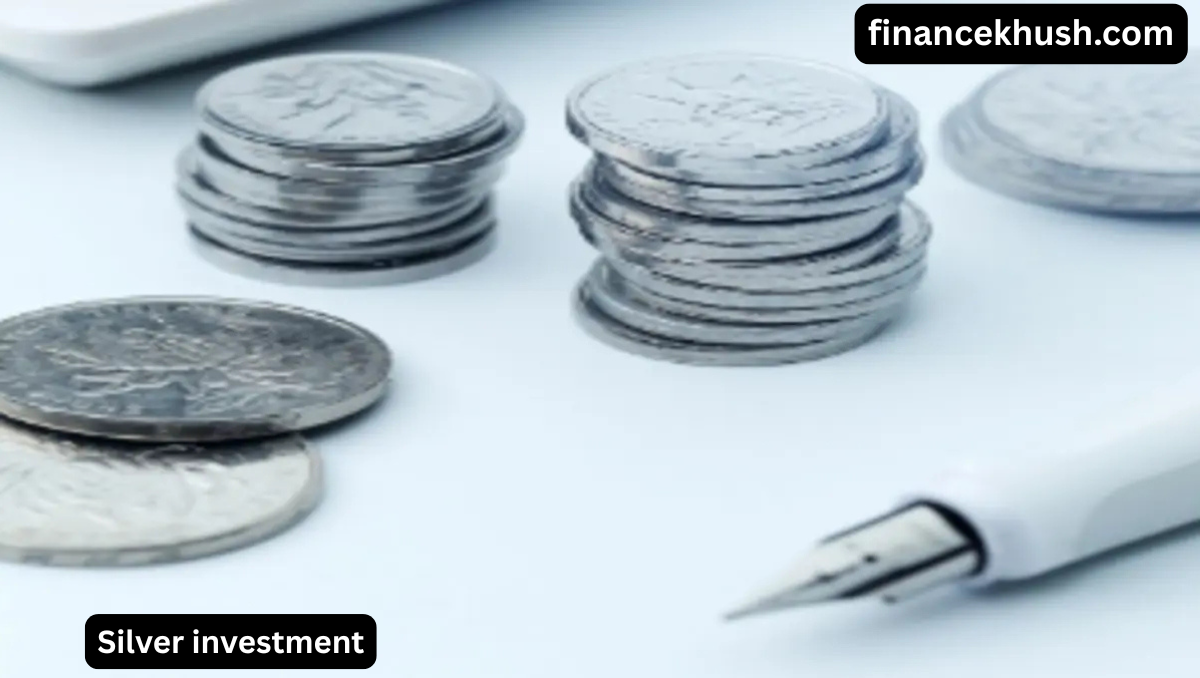Welcome to our Silver Investment Guide! If you want to diversify your investment portfolio or safeguard your wealth from inflation, silver could be a good choice. This precious metal has been appreciated for ages and is a reliable and rewarding investment choice. In this essay, we’ll go over the various ways to invest in silver, as well as the benefits and hazards involved. Whether you’re new to investing or want to learn more about silver as a new asset, we’ll present clear, easy-to-understand information to help you make sound decisions. Let’s delve into the world of silver investment!
Why Silver?
Before delving into the mechanics of silver investment, it’s critical to understand why silver has been a dependable investment for ages. While gold is traditionally regarded as the king of precious metals, silver remains a viable investment option. It is inexpensive, extremely liquid, and, due to its widespread industrial applications, offers distinct advantages over
other types of investment.
The History of Silver as Money and Investment.
Silver’s historical importance extends back thousands of years. Silver was employed as currency in ancient civilisations, with coins coined from the metal to facilitate trade and commerce. Over time, silver, like gold, became a store of value and was regarded as a stable asset to own.
Silver is still viewed today as a hedge against inflation, currency depreciation, and geopolitical turmoil. It’s also worth noting that silver is utilised extensively in a variety of industries, including electronics, solar energy, and medicine. Silver has become a distinctive and precious asset for investors due to its wide range of applications.
Silver Investment Types:
There are various ways to invest in silver, each with its own set of benefits and hazards. The most popular types of silver investments include:
1. Physical silver (coins and bars).
Buying silver coins, bars, or bullion is how you invest in physical silver. This is the most straightforward way to invest in metal, and many investors prefer it since it is tangible. You can physically store the silver in a safe, vault, or other secure area.
The most common coins are the American Silver Eagle, Canadian Silver Maple Leaf, and Austrian Silver Philharmonic. These coins are not only readily recognised, but they are also simple to buy and trade.
Silver bars come in a variety of sizes, ranging from 1-ounce bars to bigger 100-ounce bars, making them suitable for those wishing to buy in larger quantities. The disadvantage of real silver is that it requires secure storage and insurance, which might raise the overall cost of your investment.
2. Silver exchange-traded funds.
Silver ETFs allow you to invest in silver without physically holding it. These funds follow the price of silver and are usually backed by genuine silver stored in secure vaults. The primary advantage of investing in silver ETFs is that they are extremely liquid and easily traded on the stock exchange.
iShares Silver Trust (SLV) is one of the most popular silver ETFs. By purchasing shares in the ETF, investors can obtain exposure to silver price swings without the requirement for physical storage.
3. Silver mining stocks
Another option for investing in silver is to buy stock in silver mining firms. These companies are active in the exploration, mining, and processing of silver. When silver prices rise, these companies’ profits often climb, leading to greater stock values.
However, investing in silver mining equities involves its own set of hazards. The performance of mining enterprises is influenced by a variety of factors, including silver prices, operating expenses, and managerial decisions. Furthermore, mining equities are vulnerable to market volatility and other risks inherent in individual companies.
4. Silver Futures and Options.
For more experienced investors, silver futures and options allow them to speculate on the future price of silver. These financial products allow investors to buy or sell silver at a set price on a future date.
Futures and options trading are more risky and sophisticated than other types of silver investment. While they have the potential for big profits, they also entail the danger of significant losses, making them only ideal for people with a strong grasp of the markets and a higher risk tolerance.

Silver Investment Benefits
Silver investing provides a number of advantages that may appeal to a wide range of investors. Some of the primary advantages are:
1. Protect Against Inflation
One of the key reasons individuals invest in silver is to protect against inflation. When the value of fiat currencies falls owing to inflation, silver retains its worth, acting as a currency hedge.
Historically, silver has been utilised as a store of value during periods of economic insecurity. As the purchase power of the dollar declines, the value of silver rises, making it a beneficial asset to have in times of economic turmoil.
2. Diversifying the Investment Portfolio
Including silver in your financial portfolio can help you diversify your assets and reduce risk. Diversification is a strategy adopted by investors to diversify their investments across multiple asset classes in order to mitigate the impact of a downturn in one area.
Silver, which is less connected with equities and bonds, can give some protection during periods of market turbulence. If the stock market is down, silver may outperform, helping to offset losses in other sections of your portfolio.
3. Industrial demand
Unlike gold, which is generally regarded as a store of wealth with few industrial applications, silver has numerous industrial applications. It’s utilised in electronics, solar panels, medical equipment, and a range of other fields. This industrial demand supports silver’s long-term value by providing a constant market for the metal.
As technology advances, silver’s industrial applications are projected to expand, resulting in increased demand and higher prices over time.
4. liquidity
Silver is one of the most liquid assets. Whether you own physical silver or silver-backed ETFs, you may readily purchase and sell it on the market. This makes silver a versatile and accessible investment, allowing you to rapidly convert it to cash if necessary.
5. Prospects for Growth
Silver has the potential for major price appreciation. While it is more volatile than gold, this volatility might be beneficial if you time your investment appropriately. As demand for silver grows, especially in the industrial sector, there may be potential for significant gains in the future.
The risks of investing in silver
While silver can be a rewarding investment, it also carries some hazards. Understanding these dangers will allow you to make more educated decisions about silver investing.
1. Volatile
One of the biggest dangers of investing in silver is price volatility. Compared to gold, which moves more slowly and stably, silver prices can fluctuate substantially in the short term. While this volatility has the potential to provide huge profits, it also implies that the value of your investment could fall dramatically in a short period of time.
Investors should be prepared for market volatility and be willing to hang onto their investments for the long term if necessary.
2. Storage and Insurance Costs
If you decide to invest in real silver, you will need to consider storage and insurance expenses. Keeping large amounts of silver in a secure location can be costly, especially if you use a third-party vault or safety deposit box. Furthermore, the expense of insuring your silver contributes to your total investment expenditures.
3. Market Risk:
All assets, including silver, are vulnerable to market fluctuations. Geopolitical developments, economic downturns, and market mood can all have an impact on silver prices. While silver can be an effective hedge against inflation and economic insecurity, it is not immune to broader market trends.
4. Counterparty Risk in ETFs and Mining Stocks.
When you invest in silver ETFs or mining equities, you are subject to counterparty risk. This implies that if the company or fund that manages your investment runs into financial difficulties, your investment may suffer.
For example, in the case of silver mining stocks, poor management decisions, operational issues, or falling silver prices could cause your investment to be devalued.
How To Begin Investing in Silver
If you’re ready to start investing in silver, here are some important steps to get you started:
1. Establish your investment goals.
Before investing in silver, it’s critical to determine your investment objectives. Are you wanting to protect against inflation, diversify your portfolio, or achieve long-term growth? Understanding your goals will assist you in determining which type of silver investment is ideal for you.
2. Look at silver investment options.
Once you’ve determined your investment objectives, it’s time to investigate the numerous silver investment alternatives. Consider the benefits and drawbacks of physical silver, ETFs, mining stocks, and futures contracts. Take the time to examine each choice and decide which one best fits your risk tolerance and financial goals.
3. Select a Broker or Dealer.
If you’re buying silver ETFs or mining stocks, you’ll need to find a broker to help you with your transactions. If you’re buying real silver, you’ll need to find a trustworthy dealer. Look for dealers with a history of dependability and reasonable pricing. When purchasing actual silver, ensure that the vendor gives certifications of authenticity and guarantees the metal’s purity.
4. Monitor the Market
Silver prices can change quickly, so it’s critical to stay current on market movements. Monitor the silver price on a regular basis and keep an eye out for news on global economic circumstances, industrial demand, and geopolitical developments that may have an impact on silver prices.

Conclusion
Investing in silver may be a significant addition to any financial portfolio, providing a hedge against inflation, portfolio diversity, and exposure to the metal’s increasing industrial demand. However, silver, like all investments, carries risks, and it is critical to approach it with a thorough grasp of the market.
Read more
Whether you’re looking for physical silver, silver ETFs, mining stocks, or futures contracts, conduct your homework, determine your investment goals, and keep an eye on the market to make informed judgements. With the appropriate plan, silver may be a lucrative and dependable metal to have in your investing portfolio.
Faq’s
1. What is the definition of silver investment?
Silver investing entails purchasing silver in various forms, such as coins, bars, or silver-backed funds, in order to increase wealth or protect against inflation.
2. Why should I buy silver?
Silver is an excellent method to broaden your investing portfolio. It serves as an inflation hedge, has industrial demand, and is a tangible asset that can retain its value during times of economic turmoil.
3. How should I go about investing in silver?
Silver can be purchased in the form of coins and bars, silver ETFs, or silver mining equities. Each choice carries different levels of risk and return.
4. Is silver considered a safe investment?
While silver is a safe investment for long-term asset protection, it can be erratic in the short run. Before investing, you should understand the market and have a good plan in place.
5. What are the risks associated with investing in silver?
The price of silver fluctuates, making it a potentially risky investment. Other hazards include storage expenses for real silver and the possibility that mining equities could underperform.
6. How do I keep my actual silver?
If you buy physical silver, keep it in a secure location, such as a house safe or a vault. It is critical to preserve your silver from theft or damage, and you should consider insurance for further security.
